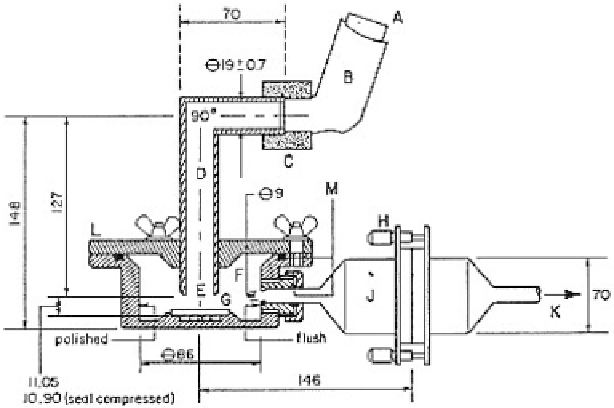Biomedical Engineering Reference
In-Depth Information
Presentations covering much of the large amount of work undertaken by
many groups in the past 5 years can be found on the websites of EPAG [
1
] and
IPAC-RS [
2
,
3
].
10.2
AIM-Based Apparatuses: Developments Before
the Present Campaigns
The “Copley-Fisons” two-stage metal impactor [
4
] (Fig.
10.1
) and the “Glaxo” Twin
Impinger [
5
] (Fig.
10.2
) can be considered as two of the earliest physical manifesta-
tions of the AIM concept. Both were listed as apparatuses A and B, respectively, in
the European Pharmacopoeia up until the 4th edition published in 2002, after which
apparatus B was withdrawn on the basis that it was no longer used.
The Twin Impinger (TI) is a glassware design based on the multistage liquid
impinger (MSLI) [
6
]. The upper stage represents the throat, stage 1 and stage 2 of an
MSLI, while the final stage corresponds to stages 3 and 4 and the filter. With both
stages, particles are collected by impaction on liquid surfaces, an especially suitable
method for both pMDI and DPI analysis. The reported
d
50
for the upper stage of the
instrument is 6.3-6.4
m at 60 L/min [
7
,
8
]. This limit is likely to be viewed as too
large by today's standards. However, it would not be too difficult to reduce the
d
50
value
closer to 5
μ
m by decreasing the tube diameter leading into the impingement vessel.
Both instruments separate the aerosol emitted by the inhaler into just two size
fractions: an upper stage captures particles above a certain stage cut-off diameter
μ
Fig. 10.1
“Copley-Fisons” two-stage metal impactor (
Courtesy of Copley Scientific Ltd.,
Nottingham, UK
)

Search WWH ::

Custom Search